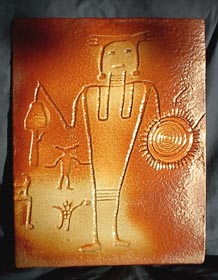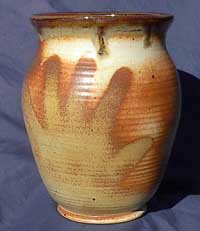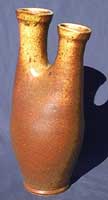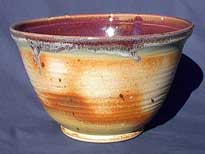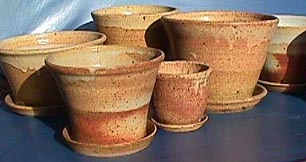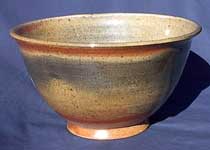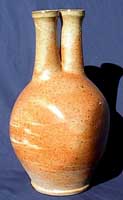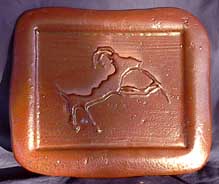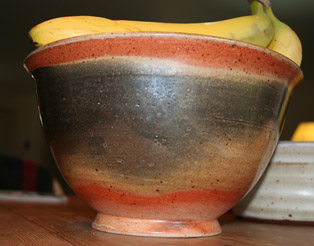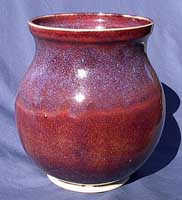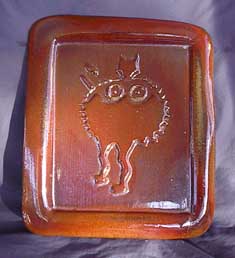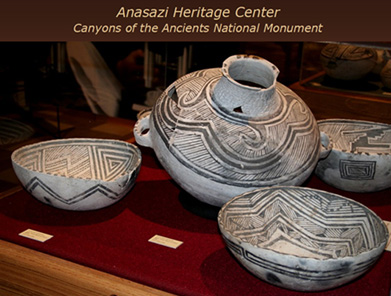|
Pueblo Black
| G200 |
2160
|
| #6
Tile Clay |
1200
|
| Dolomite |
1200
|
| Whiting |
240
|
| Borax |
275
|
| Cobalt
Carbonate |
335
|
| Red
Iron Oxide |
280
|
| Bentonite |
100
|
Results: Black/dark
gray, speckled on tiles, streaked on vertical ware, satin matte,
reflective, shows finger prints. This formulation could benefit
from some modification to increase the silica content. Not recommended
for food ware.

|
Turquoise Matte
| Nepheline Syenite |
1725
|
| Strontium Carbonate |
597
|
| OM-4 Ball Clay |
187
|
| Flint |
213
|
| Lithium Carbonate |
81
|
| Copper Carbonate |
81
|
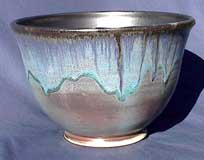
Turquoise Matte glaze exterior with black interior. Use
with caution regarding thickness; this formula will run. I
recommend spraying.
|
